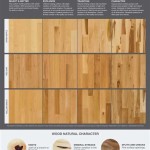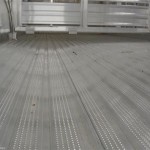Cost of Solid Wood Flooring: A Comprehensive Overview
Solid wood flooring, a timeless and desirable choice for homeowners, offers unparalleled beauty, durability, and a significant return on investment. However, the decision to install solid wood flooring often hinges on understanding the associated costs. This article provides a comprehensive overview of the various factors contributing to the overall cost of solid wood flooring, enabling informed decision-making.
The cost of solid wood flooring is not simply the price per square foot of the material itself. It involves a complex interplay of factors, including the type of wood, grade, finish, installation complexity, and geographic location. Ignoring these nuances can lead to significant budget overruns and ultimately, dissatisfaction with the finished product.
This article will explore each of these key cost drivers in detail, providing a clear understanding of the potential expenses involved in acquiring and installing solid wood flooring. By understanding these factors, individuals can more accurately estimate the cost of their project and make informed choices that align with their budget and aesthetic preferences.
Understanding the Material Cost
The primary driver of solid wood flooring cost is the material itself. The price varies significantly depending on the species of wood, its grade, and whether it is prefinished or unfinished. Hardwood species like oak, maple, and hickory are generally more affordable than exotic species like Brazilian cherry, walnut, or teak. The rarity and sourcing complexity of exotic woods contribute to their higher price point.
Wood grade refers to the visual appearance of the flooring, determined by the number of knots, color variations, and other natural characteristics present in the wood. Clear grade wood, with minimal visual imperfections, is typically the most expensive. Common grade wood, with more noticeable character markings, is generally more affordable. The choice of grade depends on the desired aesthetic and the overall style of the space. Some homeowners prefer the clean, uniform look of clear grade, while others appreciate the rustic charm of common grade.
Prefinished flooring, as the name suggests, arrives from the manufacturer with a protective finish already applied. This eliminates the need for sanding and finishing on site, potentially reducing installation time and labor costs. However, prefinished flooring often costs more per square foot than unfinished flooring. Unfinished flooring requires sanding, staining (if desired), and the application of multiple coats of finish after installation. While this adds to the labor cost, it allows for complete customization of the color and sheen of the floor. Ultimately, the decision between prefinished and unfinished flooring depends on the homeowner's priorities and budget.
The thickness of the solid wood plank also contributes to the material cost. Thicker planks offer greater durability and can be sanded and refinished multiple times over their lifespan. However, thicker planks are also more expensive. A standard thickness for solid wood flooring is ¾ inch, but thinner options are available at a lower price point. The choice of thickness should be based on the expected level of foot traffic and the desired longevity of the floor.
Analyzing Installation Costs
Installation costs represent a significant portion of the overall expense of solid wood flooring. The complexity of the installation, the condition of the subfloor, and the experience of the installer all influence the final price. Solid wood flooring can be installed using several methods, including nailing, stapling, or gluing down. The best method depends on the type of subfloor and the specific characteristics of the wood.
Nailing or stapling is the most common method for installing solid wood flooring over a wooden subfloor. This method is relatively straightforward and cost-effective. However, it requires a level subfloor and careful attention to detail to ensure a secure and even installation.
Gluing down solid wood flooring is typically used over concrete subfloors or when a more stable and secure installation is desired. This method requires specialized adhesives and a perfectly level subfloor. Gluing down is generally more expensive than nailing or stapling due to the added material and labor costs.
The condition of the subfloor is a critical factor in determining installation costs. If the subfloor is uneven, damaged, or not properly prepared, additional work will be required to ensure a smooth and stable surface for the new flooring. This may involve leveling the subfloor, repairing cracks, or installing a new underlayment. These additional steps will add to the overall cost of the installation.
The experience and skill of the installer also influence the cost. Experienced installers are typically more expensive, but they can ensure a high-quality and long-lasting installation. Hiring a qualified installer is crucial to avoid problems such as squeaky floors, uneven surfaces, and premature wear.
Additional costs related to installation can include removing existing flooring, disposing of waste materials, and installing baseboards or other trim. These costs should be factored into the overall budget to avoid unexpected expenses.
Accounting for Additional Costs and Regional Variations
Beyond the material and installation costs, several other factors can impact the overall cost of solid wood flooring. These include the cost of underlayment, finishing (if using unfinished flooring), and any necessary repairs or modifications to the existing structure.
Underlayment is a layer of material placed between the subfloor and the solid wood flooring. It provides a moisture barrier, reduces noise transmission, and helps to cushion the floor. The cost of underlayment varies depending on the type of material and its thickness. While not always required, underlayment is generally recommended for solid wood flooring installations, particularly over concrete subfloors.
For unfinished flooring, the cost of finishing must be factored in. This includes the cost of sanding, staining (if desired), and applying multiple coats of finish. The cost of finishing depends on the type of finish used and the number of coats applied. High-quality finishes offer greater durability and protection against wear and tear, but they also come at a higher price.
Regional variations in labor and material costs can also impact the overall cost of solid wood flooring. Labor costs tend to be higher in urban areas and in regions with a high cost of living. Material costs can also vary depending on the availability of local suppliers and the transportation costs associated with shipping materials from other regions.
Furthermore, potential modifications to the existing structure, such as trimming doors or adjusting baseboards, may be necessary to accommodate the new flooring. These modifications can add to the overall cost of the project. It is always advisable to obtain multiple quotes from different contractors to compare prices and ensure that all potential costs are accounted for.
Finally, consider the cost of maintaining the solid wood floor after installation. Regular cleaning and occasional refinishing will be required to keep the floor looking its best and to extend its lifespan. These maintenance costs should be factored into the long-term budget for the flooring.

Average Hardwood Flooring S In 2024 Forbes Home

How Much Does Flooring Installation Cost 2024 Guide

How Much Does Timber Floor Installation Cost In Perth

Cost Of Installing White Oak Flooring Three Trees

Hardwood Flooring Cost 2024 Per Square Foot Mk

How Much Does Flooring Installation Cost 2024 Guide

Hardwood Flooring Installation Costs 2024

How Much Does Wooden Floor Installation Cost In 2024 Mybuilder

Solid Wood Flooring S Cost

How Much Does Floating Timber Floors Cost
Related Posts








